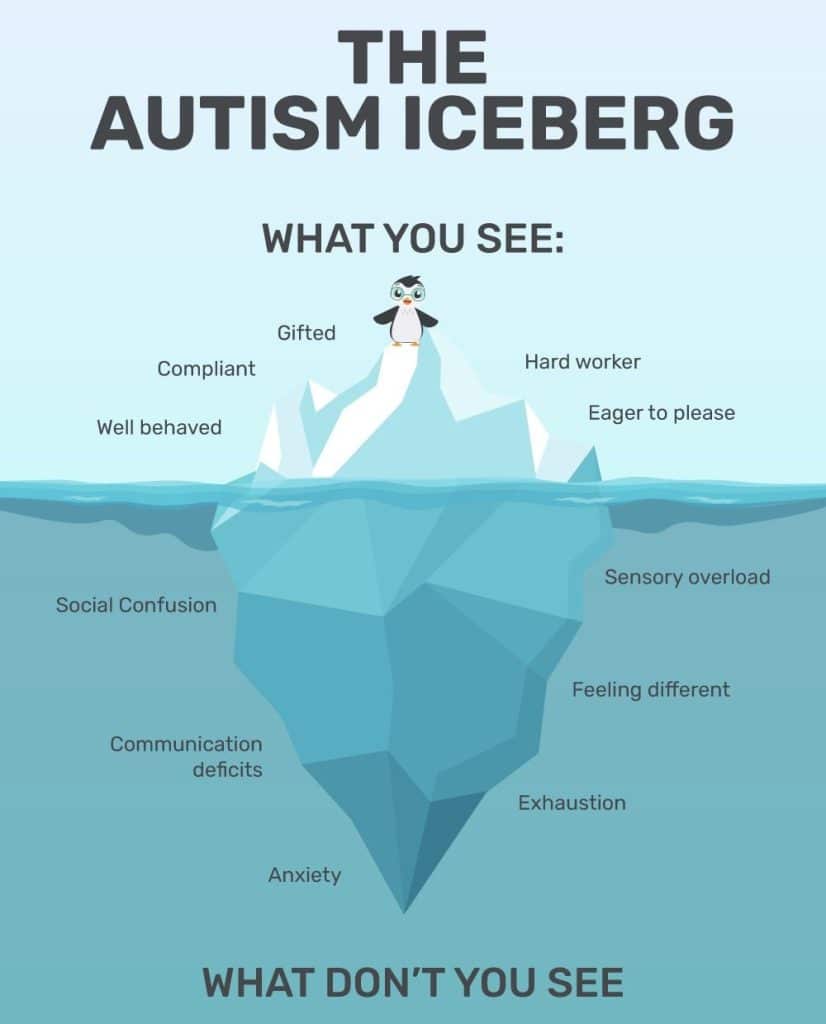Ever felt puzzled by the diverse world of autism? You’re in good company. As a parent, understanding the different autistic types can empower you to better support your neurodivergent child. In this post, we’ll explore the various types of autism, their characteristics, and how to tailor your approach to your child’s unique needs. We’ll discuss the Autism Spectrum Disorder (ASD) classification, previously separate diagnoses like Asperger’s Syndrome, and strategies for fostering your child’s growth.
Table of Contents
Autism Spectrum Disorder: A Unifying Diagnosis
First things first, it’s essential to understand that the term “autistic types” refers to the variations within the Autism Spectrum Disorder (ASD). In 2013, the American Psychiatric Association (APA) combined several previously separate diagnoses into a single ASD classification. This change aimed to better reflect the diverse range of symptoms and abilities among autistic individuals.
The ASD diagnosis now encompasses the following conditions:
- Autistic Disorder
- Asperger’s Syndrome
- Pervasive Developmental Disorder – Not Otherwise Specified (PDD-NOS)
- Childhood Disintegrative Disorder (CDD)
Characteristics of Autistic Types
While the ASD diagnosis unifies these conditions, it’s important to recognize the unique characteristics of each autistic type. Let’s take a closer look at the most common types and their traits:
1. Autistic Disorder (Classic Autism)
Autistic Disorder, often referred to as Classic Autism, is characterized by significant challenges in social interaction, communication, and repetitive behaviors. Kids with this diagnosis may experience a variety of symptoms, such as:
- Difficulty with verbal and non-verbal communication
- Challenges in forming and maintaining relationships
- Repetitive behaviors and restricted interests
- Sensory sensitivities
It’s important to note that the severity of these symptoms can vary greatly among individuals with Autistic Disorder. Some kids may have more pronounced challenges, while others may experience milder symptoms.

Read more: What are the Symptoms of Asperger's in Children?
2. Asperger’s Syndrome
Asperger’s Syndrome, now part of the ASD diagnosis, is often considered a milder form of autism. Kids with Asperger’s typically have average or above-average intelligence and may excel in specific areas. However, they still face challenges in social interaction and communication. Some common traits include:
- Difficulty understanding social cues and body language
- Challenges with empathy and perspective-taking
- Strong interests in specific topics or hobbies
- Clumsiness or awkwardness in movement
Kids with Asperger’s can have remarkable strengths like super memory and problem-solving skills. These unique abilities are part of their neurodiversity, just like superheroes have their powers. Remember, there are various “types of autism,” each with unique qualities. So, if your child falls into one of these categories, celebrate their unique abilities – you might uncover a hidden superpower!
3. Pervasive Developmental Disorder – Not Otherwise Specified (PDD-NOS)
PDD-NOS is a diagnosis given to kids who display some autistic traits but don’t meet the full criteria for Autistic Disorder or Asperger’s Syndrome. These kids may have milder symptoms or a combination of characteristics from different autistic types. Common features include:
- Social and communication challenges
- Repetitive behaviors or restricted interests
- Variable levels of cognitive and language abilities
Since PDD-NOS is a broad category, it’s crucial to tailor support strategies to each child’s specific needs and abilities.
Goally | The Safest Tablet for Kids

Supporting Your Neurodivergent Child
Now that you’re familiar with the different autistic types, it’s crucial to tailor your approach to your child’s unique needs. Here are some strategies to consider:
1. Early Intervention
Above all, early intervention is key to supporting your child’s development. Research shows that early, individualized support can significantly improve outcomes for kids with ASD. Seek professional guidance to develop a tailored plan for your child.
Some examples of early intervention services include:
- Speech and language therapy
- Occupational therapy
- Behavioral therapy
- Physical therapy
2. Encourage Social Skills
For kids with social and communication challenges, targeted practice can help. Engage your child in activities that promote social interaction, such as playdates, group classes, or clubs related to their interests.
Some tips for fostering social skills include:
- Modeling appropriate social behavior
- Using role-play to practice social situations
- Providing positive reinforcement for social successes

Read more: Autism Characteristics in Kids
3. Foster Independence
Encourage your child to develop independence by teaching self-help skills, such as dressing, grooming, and meal preparation. Use visual schedules, social stories, and other tools to support their understanding and autonomy.
Some strategies for promoting independence include:
- Breaking tasks into smaller steps
- Using visual cues or checklists
- Providing opportunities for choice and decision-making
4. Create a Supportive Environment
Lastly, ensure your home environment is conducive to your child’s needs. This may include providing sensory-friendly spaces, using visual cues, and establishing consistent routines.
Consider the following when creating a supportive environment:
- Minimizing sensory distractions (e.g., noise, bright lights)
- Using visual schedules to outline daily routines
- Creating designated spaces for relaxation and focused activities
Goally | Visual Scheduler for Autism
Does your child struggle with getting ready in the morning independently? Goally’s routine app on the best tablet for kids breaks down large tasks into small, achievable steps for autistic kids. Create custom routines with your own videos & pictures for every step.
Embracing the Diversity of Autism
To sum up, understanding the different autistic types is essential for supporting your neurodivergent child. By recognizing their unique characteristics and implementing tailored strategies, you can foster their growth and development. Remember, every child is different, and embracing their individuality is key to helping them thrive.
FAQ’s About Types of Autism
What are the main types of autism?
The main types of autism are Asperger's Syndrome, Rett Syndrome, Childhood Disintegrative Disorder (CDD), and Pervasive Developmental Disorder - Not Otherwise Specified (PDD-NOS). However, these types are no longer used in diagnosis, and autism is now referred to as Autism Spectrum Disorder (ASD).
Is Asperger's Syndrome still considered a type of autism?
Asperger's Syndrome is no longer a separate diagnosis and is now included under the umbrella term of Autism Spectrum Disorder (ASD) in the DSM-5, the diagnostic manual used by mental health professionals.
What is Rett Syndrome, and is it a type of autism?
Rett Syndrome is a rare genetic disorder that primarily affects girls and is characterized by a regression in language, motor skills, and social interaction. While it shares some similarities with autism, it is now considered a distinct disorder.
How does Childhood Disintegrative Disorder (CDD) differ from other types of autism?
Childhood Disintegrative Disorder (CDD) is a rare condition characterized by a significant regression in skills after a period of typical development, usually between ages 2 and 10. Unlike other forms of autism, the regression in CDD is more severe and rapid.
What is Pervasive Developmental Disorder - Not Otherwise Specified (PDD-NOS)?
PDD-NOS was a diagnosis used for individuals who had some autistic characteristics but did not meet the full criteria for other autism disorders. With the update to the DSM-5, PDD-NOS is no longer used, and individuals with these characteristics are now diagnosed with Autism Spectrum Disorder (ASD).
This post was originally published on 05/19/2023. It was updated on 05/02/2024.

Goally
We help parents teach their kids life skills, like doing bedtime and morning independently. Backed by science, we incorporate evidence-based practices and expert-informed designs in all of our apps and content.







